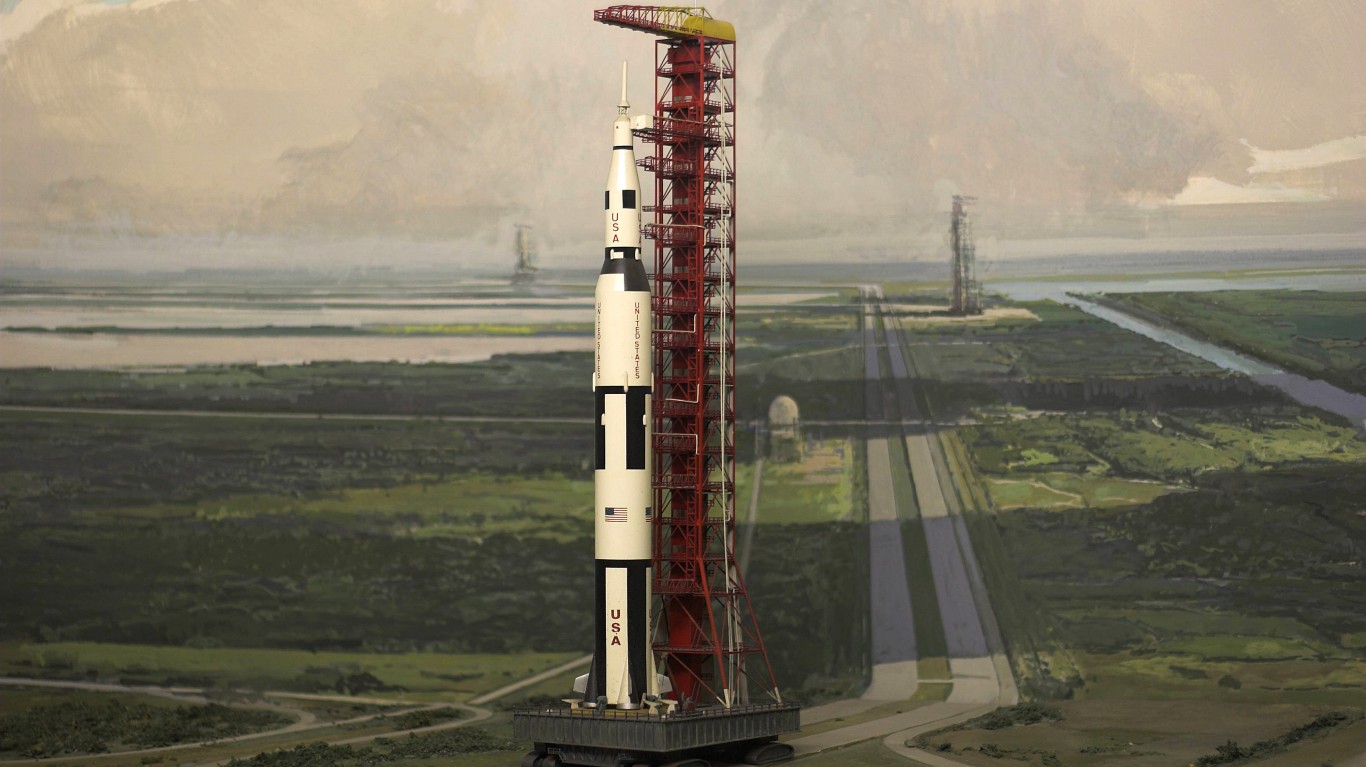
Recently, Sir Richard Branson barely made it to the edge of space in a vehicle named SpaceShipTwo, which rose 282,000 feet above the Earth’s surface. He was followed by billionaire Amazon founder Jeff Bezos, who made it a little higher to 330,000 feet. Neither went into orbit, so the journeys were not as impressive as many launched by NASA and the space programs of several other nations. Moreover, the rockets that took them on their rides were fairly small.
The Saturn V, used in the NASA program from 1967 and 1973, is still the largest and heaviest rocket ever launched. Among other things, it was used to launch the legendary Apollo missions. These versions of the Saturn V had three stages.
The Saturn V is what NASA calls a Heavy Lift Vehicle. It was also used to launch the components of the Skylab space station. It was 363 feet long, which NASA points out is taller than the Statue of Liberty. When fully fueled, it weighed 6.2 million pounds. It had a maximum thrust of 7.6 million pounds.
According to NASA, the Skylab launched was the end of the Saturn V lifespan. “The last Saturn V was launched in 1973, without a crew. It was used to launch the Skylab space station into Earth orbit.” The Saturn V’s duties to deliver astronauts into space were taken by the Space Shuttle, which itself was retired in 2011, after two decades of service.
The most powerful and largest rocket today is the Falcon Heavy, operated by Elon Musk’s SpaceX. According to the company:
Falcon Heavy is composed of three Falcon 9 nine-engine cores whose 27 Merlin engines together generate more than 5 million pounds of thrust at liftoff, equal to approximately eighteen 747 aircraft.
The Falcon Heavy is 230 feet high. That is big, but not by Saturn V’s standards.
Click here to read about 30 NASA inventions we use every day.
It’s Your Money, Your Future—Own It (sponsor)
Retirement can be daunting, but it doesn’t need to be.
Imagine having an expert in your corner to help you with your financial goals. Someone to help you determine if you’re ahead, behind, or right on track. With SmartAsset, that’s not just a dream—it’s reality. This free tool connects you with pre-screened financial advisors who work in your best interests. It’s quick, it’s easy, so take the leap today and start planning smarter!
Don’t waste another minute; get started right here and help your retirement dreams become a retirement reality.
Thank you for reading! Have some feedback for us?
Contact the 24/7 Wall St. editorial team.
